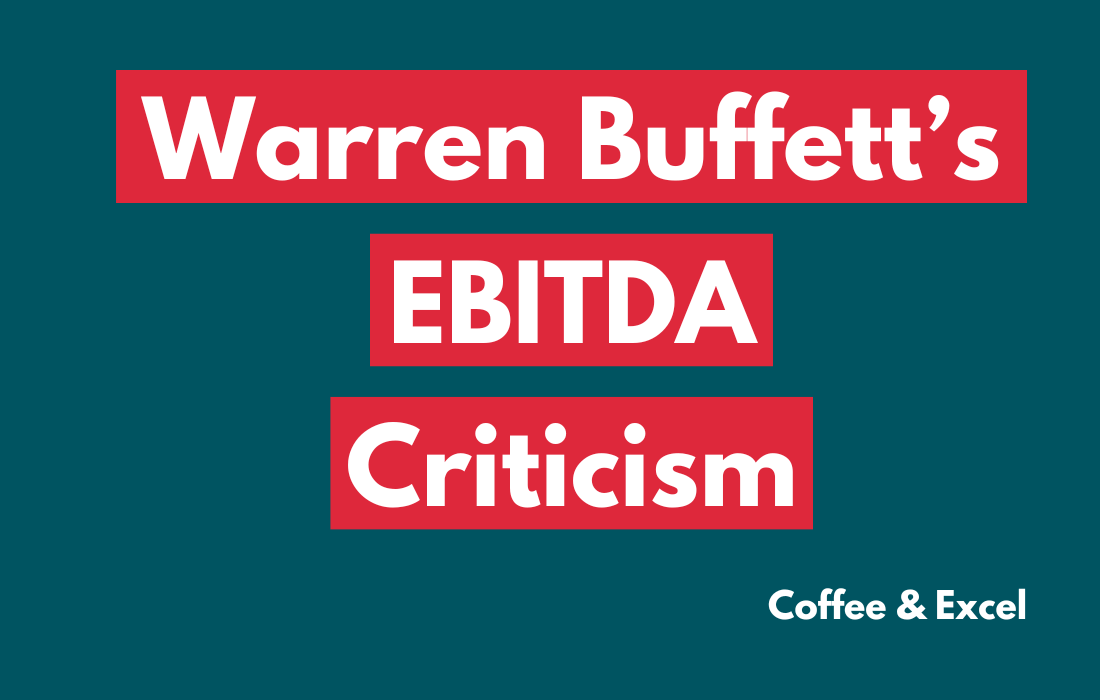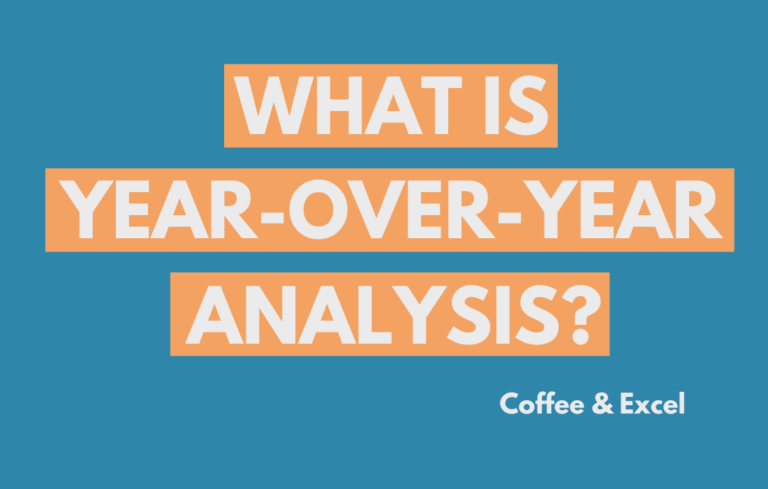Warren Buffett’s EBITDA Criticism: The Hidden Truths of Financial Metrics

Introduction
In the realm of finance, few figures command as much respect as Warren Buffett. Renowned for his astute investment choices, Buffett often challenges conventional wisdom. One such challenge is his skepticism towards popular financial metrics. Enter Warren Buffett’s EBITDA Criticism. While many professionals lean on EBITDA (Earnings Before Interest, Taxes, Depreciation, and Amortization) to gauge a company’s performance, Buffett remains wary. This article delves into his reservations, shedding light on why he believes other metrics offer a clearer picture of financial health. Join us as we navigate this intriguing perspective.
TL;DR
- EBITDA Defined: EBITDA stands for Earnings Before Interest, Taxes, Depreciation, and Amortization, highlighting operational profitability.
- Buffett’s Critique: Warren Buffett criticizes EBITDA for excluding vital expenses, potentially painting a misleading financial picture.
- Real-world Pitfalls: Companies like WorldCom and Toys “R” Us showcased strong EBITDA but faced significant financial challenges.
- Buffett’s Preferred Metrics: Buffett champions alternative metrics like Owner Earnings, Free Cash Flow, and Return on Invested Capital.
- Holistic Analysis: While EBITDA offers insights, it’s essential to use it alongside other metrics for a comprehensive financial analysis.
- Key Takeaway: EBITDA, though valuable, has limitations. Investors should approach it with caution and consider other financial indicators.
What is EBITDA? Understanding the Metric
Before diving into Warren Buffett’s EBITDA Criticism, it’s essential to grasp what EBITDA stands for and why it holds significance in the financial world. EBITDA, an acronym for Earnings Before Interest, Taxes, Depreciation, and Amortization, acts as a barometer for a company’s operational profitability. By excluding certain expenses, it aims to present a clearer picture of a company’s core operations.

The Components of EBITDA
- Earnings: This represents the net profit of a company. It’s the starting point from which the other components are deducted or added.
- Interest: Typically, this refers to the interest expense a company incurs on its debt.
- Taxes: Corporate taxes that a company is liable to pay.
- Depreciation: A non-cash expense that accounts for the wear and tear of tangible assets like machinery.
- Amortization: Similar to depreciation, but for intangible assets like patents or trademarks.
Why Professionals Use EBITDA
Transitioning to its widespread use, many financial analysts and professionals favor EBITDA because it offers a simplified view of a company’s operational strength, excluding external factors like tax environments or financing decisions. However, as we’ll explore in Warren Buffett’s EBITDA Criticism, this metric isn’t without its detractors.
- Operational Focus: EBITDA zeros in on the company’s core business operations, sidestepping external financial obligations.
- Comparison Across Industries: Given its standardized nature, EBITDA can be a useful tool for comparing companies across different sectors.
- Investment Decisions: For investors, EBITDA can hint at a company’s potential profitability, especially when compared to its enterprise value.
Yet, while EBITDA offers these advantages, it’s crucial to approach it with a discerning eye. As we delve deeper into Warren Buffett’s EBITDA Criticism, we’ll uncover the potential pitfalls and nuances of this popular metric.
Buffett’s Main Criticisms of EBITDA: A Financial Deep Dive
While EBITDA stands as a favored metric among many financial professionals, it hasn’t escaped scrutiny. Central to this skepticism is Warren Buffett, whose reservations about EBITDA have sparked considerable debate. To truly appreciate Warren Buffett’s EBITDA Criticism, we must first dissect his primary concerns with the metric.
Interest Expense: The Ignored Liability
One cornerstone of Warren Buffett’s EBITDA Criticism lies in the exclusion of interest expenses. By sidelining interest:
- Debt Masking: Companies with substantial debt can appear healthier than they genuinely are. Interest payments, after all, are real obligations that can impact a company’s bottom line.
- Misleading Profitability: For firms with significant leverage, EBITDA can inflate operational profitability, potentially misleading investors.
Taxes: The Unavoidable Expense
Buffett firmly believes in acknowledging taxes as a genuine expense. His criticism stems from:
- Real-world Implications: Taxes, unlike some non-cash expenses, require actual cash outflows. Ignoring them can paint an overly rosy picture of a company’s financial health.
- Varied Tax Structures: Companies operate under different tax structures and rates. Excluding taxes can hinder a true apples-to-apples comparison between firms.
Depreciation & Amortization: The Silent Eroders
Depreciation and amortization, in Buffett’s view, are far from arbitrary deductions. Central to Warren Buffett’s EBITDA Criticism is the belief that:
- Tangible Asset Wear: Depreciation accounts for the wear and tear of physical assets. Ignoring this can overlook the future capital expenditures required to maintain or replace these assets.
- Value of Intangibles: Amortization reflects the diminishing value of intangible assets. By excluding it, a company might overstate the lasting value of assets like patents or copyrights.
While EBITDA offers a streamlined view of operational profitability, it’s essential to heed the reservations of seasoned investors like Buffett. As we further explore the nuances of this metric, it becomes evident that a holistic approach to financial analysis, one that considers both its strengths and weaknesses, is paramount.
Real-life Examples: EBITDA’s Potential Pitfalls in Practice
Theory and criticism, no matter how insightful, often resonate more when grounded in real-world scenarios. To truly grasp the depth of Warren Buffett’s EBITDA Criticism, it’s enlightening to explore instances where companies with impressive EBITDA figures faced unexpected financial challenges.
The Telecom Bubble: EBITDA’s Misleading Shine
One of the most vivid illustrations supporting Warren Buffett’s EBITDA Criticism is the telecom bubble of the late 1990s and early 2000s. Many telecom companies, buoyed by the tech boom, showcased robust EBITDA figures, leading investors to believe in their financial health. However, the reality was starkly different:
- WorldCom: Despite boasting a healthy EBITDA, WorldCom’s massive debt and interest payments led to one of the largest bankruptcies in U.S. history.
- Global Crossing: Similarly, Global Crossing’s reliance on EBITDA masked its unsustainable debt levels, culminating in bankruptcy in 2002.
Retail’s EBITDA Mirage: The Tale of Toys “R” Us
The retail sector, too, isn’t immune to the pitfalls of over-relying on EBITDA. Toys “R” Us serves as a cautionary tale:
- Deceptive Profitability: On the surface, Toys “R” Us often reported strong EBITDA figures. However, these numbers obscured the retailer’s mounting debt and interest obligations.
- Bankruptcy Beckons: Despite its EBITDA performance, Toys “R” Us filed for bankruptcy in 2017, underlining the dangers of overlooking interest and debt in financial analysis.
Lessons from the Field: EBITDA’s Double-Edged Sword
While EBITDA can offer insights into a company’s operational performance, these real-life examples underscore Warren Buffett’s EBITDA Criticism. They highlight the importance of:
- Holistic Analysis: Beyond EBITDA, it’s crucial to consider a company’s debt, interest obligations, and overall financial structure.
- Skepticism: High EBITDA figures, while encouraging, shouldn’t blind investors to potential red flags.
In essence, although EBITDA remains a valuable tool in the financial toolkit, it’s imperative to wield it judiciously, always mindful of its limitations and potential to mislead.
Alternative Metrics Buffett Prefers: Beyond EBITDA
While Warren Buffett’s EBITDA Criticism has been a focal point of our discussion, it’s equally vital to understand the alternative metrics he champions. Buffett, with his keen eye for genuine value and sustainable profitability, leans on several other financial indicators to gauge a company’s health and potential. Let’s delve into these preferred metrics and understand why they resonate with the Oracle of Omaha.
Owner Earnings: A True Reflection of Value
Central to Warren Buffett’s EBITDA Criticism is his advocacy for the concept of ‘Owner Earnings.’ This metric, in Buffett’s view, offers a more transparent picture of a company’s intrinsic value. Owner Earnings is calculated as:
- Net Income + Depreciation & Amortization – Capital Expenditures
The rationale behind this metric:
- Genuine Profitability: By adding back non-cash expenses and subtracting capital expenditures, owner earnings reflect the true cash profit available to shareholders.
- Sustainability: This metric emphasizes the cash a business can generate without compromising its future growth.
Free Cash Flow: The Lifeblood of a Business
Another favorite of Buffett’s is the Free Cash Flow (FCF). This metric underscores a company’s ability to generate cash after accounting for capital expenditures. FCF is pivotal because:
- Operational Efficiency: It highlights how efficiently a company turns its revenue into actual cash, which can be used for dividends, debt repayment, or reinvestment.
- Financial Flexibility: Companies with robust FCF have the flexibility to weather economic downturns, invest in growth opportunities, or return value to shareholders.
Return on Invested Capital (ROIC): Efficiency in Capital Allocation
Buffett often emphasizes the importance of efficient capital allocation. ROIC, which measures the return a company generates on its invested capital, aligns perfectly with this philosophy. A high ROIC indicates:
- Effective Management: It suggests that the company’s management is adept at deploying capital to generate returns.
- Competitive Advantage: Often, companies with a high ROIC possess a moat or competitive advantage that allows them to earn above-average returns on their investments.
In light of Warren Buffett’s EBITDA Criticism, these alternative metrics underscore his holistic approach to financial analysis. They emphasize genuine profitability, efficient capital allocation, and the sustainability of a business, offering a comprehensive view that goes beyond the surface-level insights of EBITDA.
In Conclusion: Embracing the Depth of Warren Buffett’s EBITDA Criticism
Navigating the intricate landscape of financial metrics can be daunting. Yet, as we’ve explored through Warren Buffett’s EBITDA Criticism, it’s imperative to approach these metrics with a discerning eye. While EBITDA offers valuable insights into operational profitability, Buffett’s reservations remind us of the importance of holistic financial analysis. By understanding and considering alternative metrics that capture genuine value and sustainability, investors can make more informed decisions. In essence, Warren Buffett’s EBITDA Criticism isn’t just a critique; it’s an invitation to delve deeper, ensuring that our financial compass points towards true north.
Frequently Asked Questions (FAQs) about Warren Buffett’s EBITDA Criticism
1. What is EBITDA? EBITDA stands for Earnings Before Interest, Taxes, Depreciation, and Amortization. It’s a metric used to evaluate a company’s operational profitability by excluding certain expenses.
2. Why does Warren Buffett criticize EBITDA? Buffett believes that EBITDA can be misleading. By excluding interest, taxes, depreciation, and amortization, it can paint an overly optimistic picture of a company’s financial health, especially for firms with significant debt or tangible assets that depreciate.
3. What are some real-world examples where EBITDA was misleading? Companies like WorldCom and Global Crossing in the telecom sector, and Toys “R” Us in the retail sector, reported strong EBITDA figures but faced significant financial challenges due to high debt and other factors.
4. What metrics does Buffett prefer over EBITDA? Buffett leans towards metrics like Owner Earnings, Free Cash Flow (FCF), and Return on Invested Capital (ROIC). These metrics offer insights into genuine profitability, efficient capital allocation, and the sustainability of a business.
5. How is Owner Earnings calculated? Owner Earnings is calculated as Net Income + Depreciation & Amortization – Capital Expenditures. It reflects the true cash profit available to shareholders.
6. Why is Free Cash Flow important? Free Cash Flow underscores a company’s ability to generate cash after accounting for capital expenditures. It indicates operational efficiency and provides insights into a company’s financial flexibility.
7. Is EBITDA entirely useless then? No, EBITDA can still offer valuable insights, especially when comparing companies across different industries. However, it’s essential to understand its limitations and use it in conjunction with other financial metrics.
8. How can I ensure a holistic approach to financial analysis? Diversify the metrics you rely on. While EBITDA can be a starting point, consider other indicators like Owner Earnings, FCF, and ROIC. Always be aware of a company’s debt levels, interest obligations, and the tangible and intangible assets that may depreciate or amortize over time.

